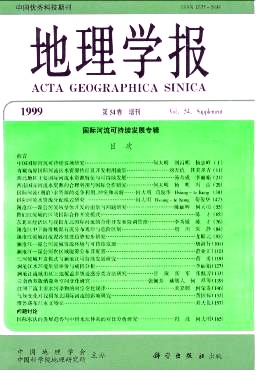Zhu Dakui, Li Haiyu, Pan Shaoming, You Kunyuan
In collaboration with a coastal engineering project, an investigation into the structures and spatial distribution of the seabed sedimentary stratification of the Shenzhen Bay has been undertaken. Shenzhen Bay is located between Shenzhen City and Hong Kong and in the east coast of the Pear R. Estuary, with an area of 112 km 2. The seabed topography of the bay is rather flat, with most water depth less than 5 m. The bay is developed along a tectonic fault depression, therefore, the configuration of the coast is controlled mainly by fault tectonics. The bedrock of the Shenzhen Bay is composed of granite of Yanshan Period. The surface of the bedrock had undergone intensive weathering with a weathering layer thickness of about 5 m~10 m; some of them have become laterite. The climate of the region is tropical monsoon. East wind is dominant throughout a year. Typhoon affects the area often, with a frequency of 2 times each year, normally in September and October. The tides here are irregular and semi diurnal, with tidal ranges of 3 4 m and 1 36 m for maximum and mean tides, respectively. Flood tidal current velocity is almost equal to that of ebb, at about 70 cm/s. The sediments in the Shenzhen Bay are mainly from the offshore, with marine material taking about 95%; this implies that the region is an estuarine embossment with low sedimentation rates. The fieldwork undertaken includes two parts. First part is geomorphologic and Quaternary survey in the bay and along the coastline, with the objectives of investigating the initial geomorphologic characteristics and the outlines of environmental evolution. The second part if the survey of the seabed stratification using GPS(model 1008-586), Geopulse(5210A) and chartered steel hull ship which has a load capacity of 200 tons and light draght of 0.5 m, along the grid lines in NS and WE. The seismic profile records were interpreted, on the bases of comprehensive analysis of seabed geomorphology and Quaternary Geology, and core data. Five sedimentary units were found in the seabed sedimentary stratification in the Shenzhen Bay. (1) Marine muddy layer: it is the fine materials deposited in the quiet water environment, with well developed horizontal bedding structures; (2) Fluvial sub clay layer: it is a kind of rather solid sediments, with milky white and grayish green strips, and originated from flood plain sediments. It has been deposited in water for quite a long time, and then emerged out of water to be in the oxidizing and leaching environment; (3) Fluvial sand layer: it is composed mainly of pure coarse sand, with a mean grain diameter of 0 5 mm~1 0 mm. The sands are mostly white, with clean surface and many fresh, sharp edges; (4) Layer of mixed sand and clay: it is the alluvial/diluvial sediments on the surface of the weathering crust; (5) Layer of weathered rock: it is the transit layer between the deposited sediments and fresh granite. All the data were input into computer, and processed using GIS software ARC/INFO. The outputs are various data sets and images about the spatial distribution of seabed sedimentary stratification. The study gives an good example to show that the application of geophysical survey and GIS in coastal water has the characteristics of high speed, high resolution, and illustrative displaying effects, and is promised to have bright future in the studies on regional geomorphology and Quaternary Geology.
